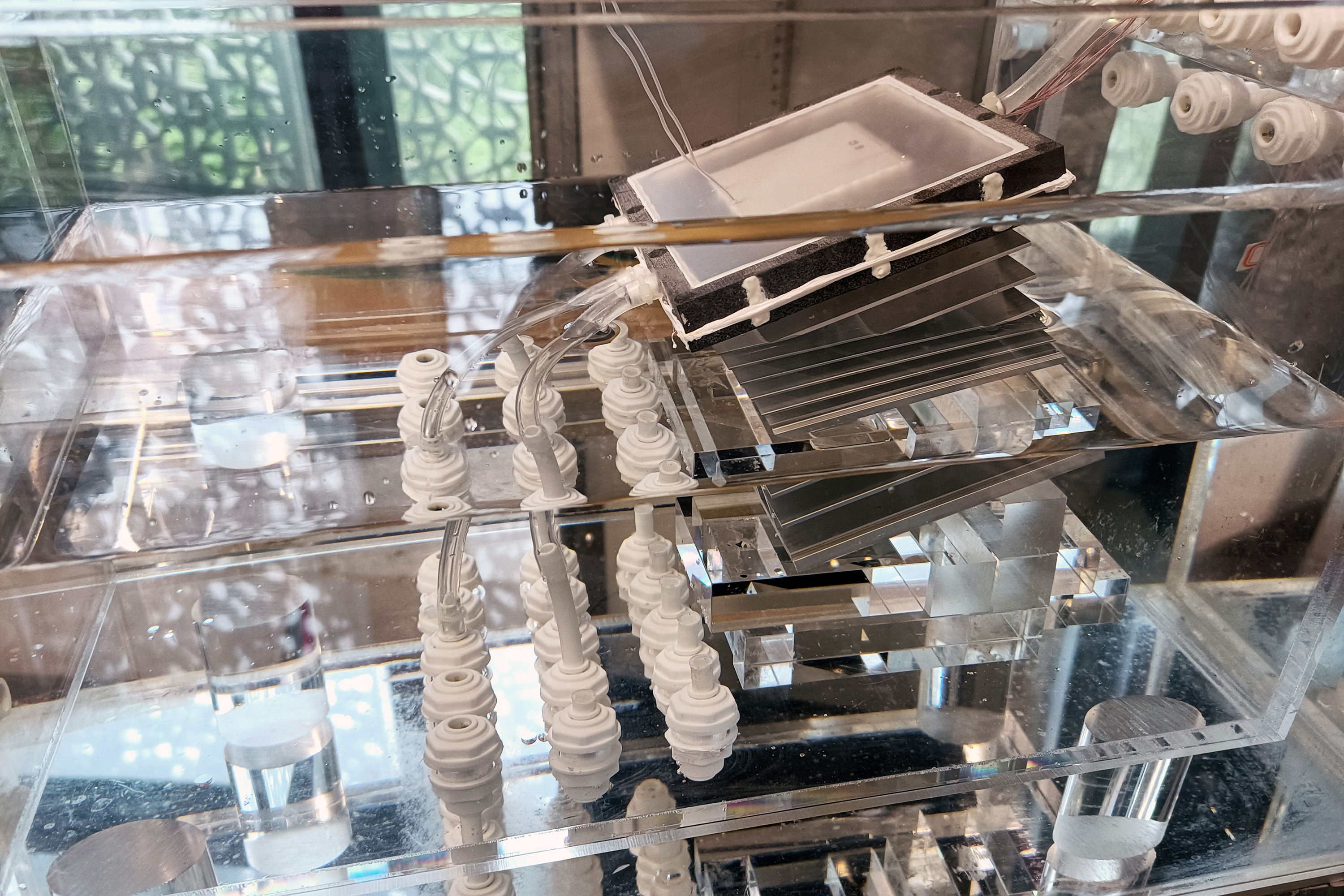Engineers at MIT and in China are aiming to turn seawater into drinking water with a completely passive device that is inspired by the ocean, and powered by the sun.
In a paper appearing today in the journal Joule, the team outlines the design for a new solar desalination system that takes in saltwater and heats it with natural sunlight.
The researchers estimate that if the system is scaled up to the size of a small suitcase, it could produce about 4 to 6 liters of drinking water per hour and last several years before requiring replacement parts. At this scale and performance, the system could produce drinking water at a rate and price that is cheaper than tap water.



For desalination all you need is a glass bowl and two metal bowls. You put the bigger metal bowl on the ground, the smaller metal bowl in the middle, and the glass bowl over the little bowl. The salt water evaporates from the little bowl and condenses down the glass bowl into the bigger bowl. You can run this setup pretty much forever, there’s no moving parts and minimal maintenance. That’s how simple desalination is. All solar desalination projects work on this principle.
The reason we don’t use it is the same reason we don’t do so many things: there is no immediate monetary cost to destroying the environment and using up common resources, so desalination is “expensive” compared to just using up the groundwater. Once all the groundwater is used up and the rivers run dry, desalination will be very competitive.